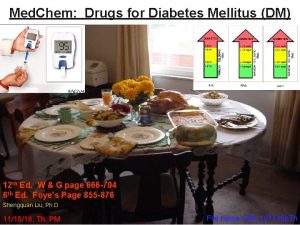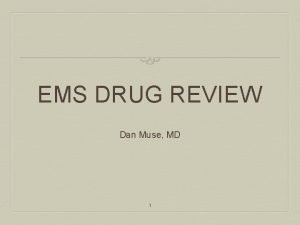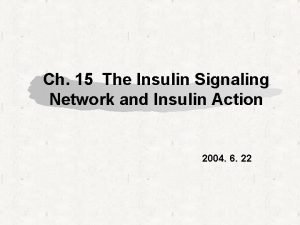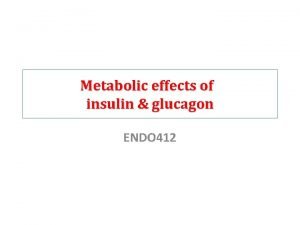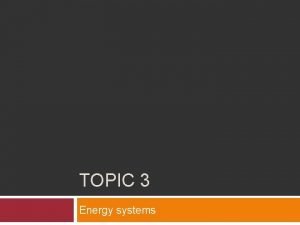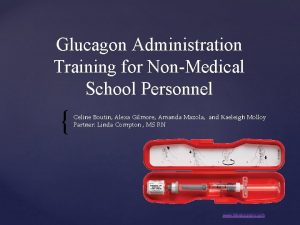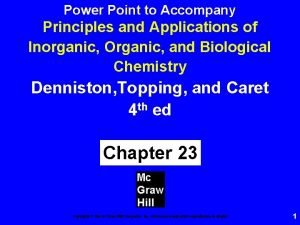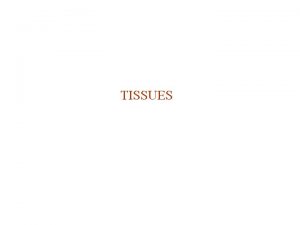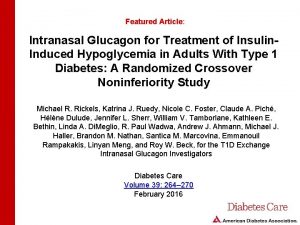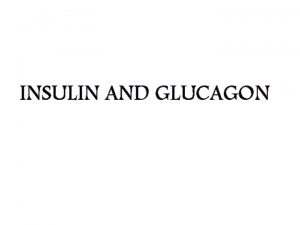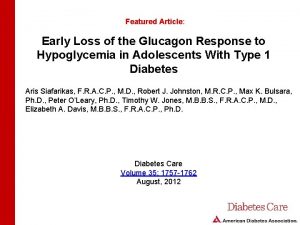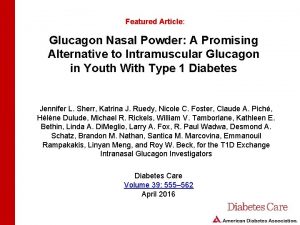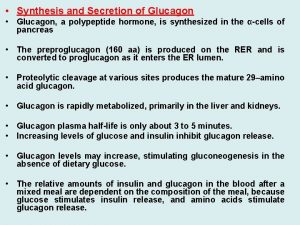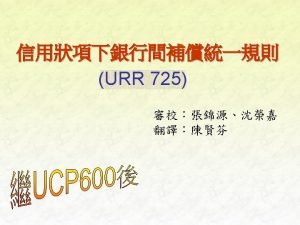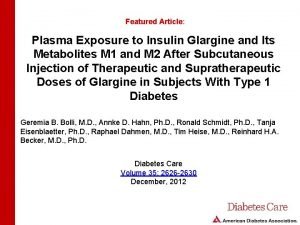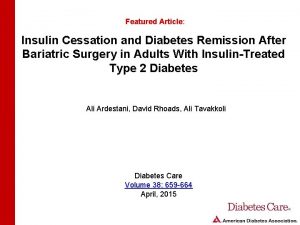Featured Article Intranasal Glucagon for Treatment of Insulin









- Slides: 9

Featured Article: Intranasal Glucagon for Treatment of Insulin. Induced Hypoglycemia in Adults With Type 1 Diabetes: A Randomized Crossover Noninferiority Study Michael R. Rickels, Katrina J. Ruedy, Nicole C. Foster, Claude A. Piché, Hélène Dulude, Jennifer L. Sherr, William V. Tamborlane, Kathleen E. Bethin, Linda A. Di. Meglio, R. Paul Wadwa, Andrew J. Ahmann, Michael J. Haller, Brandon M. Nathan, Santica M. Marcovina, Emmanouil Rampakakis, Linyan Meng, and Roy W. Beck, for the T 1 D Exchange Intranasal Glucagon Investigators Diabetes Care Volume 39: 264– 270 February 2016

STUDY OBJECTIVE • To compare a needle-free intranasal glucagon preparation with intramuscular glucagon for treatment of insulin-induced hypoglycemia Rickels M. R. et al. Diabetes Care 2016; 39: 264– 270

STUDY DESIGN AND METHODS • • • Randomized crossover noninferiority trial was conducted Study included 75 adults with type 1 diabetes and compared intranasal versus intramuscular glucagon for treatment of hypoglycemia induced by intravenous insulin Success was defined as an increase in plasma glucose to ≥ 70 or ≥ 20 mg/d. L from the glucose nadir within 30 min after receiving glucagon Rickels M. R. et al. Diabetes Care 2016; 39: 264– 270

RESULTS • • Mean plasma glucose at time of glucagon administration was 48 ± 8 and 49 ± 8 mg/d. L at the intranasal and intramuscular visits, respectively Success criteria were met at all but one intranasal visit and at all intramuscular visits Mean time to success was 16 min for intranasal and 13 min for intramuscular Head/facial discomfort was reported during 25% of intranasal and 9% of intramuscular dosing visits; nausea occurred with 35% and 38% of visits, respectively Rickels M. R. et al. Diabetes Care 2016; 39: 264– 270

Rickels M. R. et al. Diabetes Care 2016; 39: 264– 270

Rickels M. R. et al. Diabetes Care 2016; 39: 264– 270

Rickels M. R. et al. Diabetes Care 2016; 39: 264– 270

Rickels M. R. et al. Diabetes Care 2016; 39: 264– 270

CONCLUSIONS • Intranasal glucagon was highly effective in treating insulininduced hypoglycemia in adults with type 1 diabetes Rickels M. R. et al. Diabetes Care 2016; 39: 264– 270
